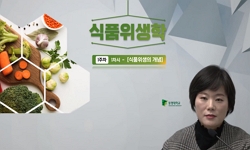302 Copyright © 2020 The Korean Society for Preventive Medicine J Prev Med Public Health 2020;53:302-306 • https://doi.org/10.3961/jpmph.20.213 The Evolving Policy Debate on Border Closure in Korea SuJin Kang1, Jihyun Moon2, Heewon Kang1, Heekyoung...
http://chineseinput.net/에서 pinyin(병음)방식으로 중국어를 변환할 수 있습니다.
변환된 중국어를 복사하여 사용하시면 됩니다.
- 中文 을 입력하시려면 zhongwen을 입력하시고 space를누르시면됩니다.
- 北京 을 입력하시려면 beijing을 입력하시고 space를 누르시면 됩니다.
https://www.riss.kr/link?id=A107069753
-
저자
Su-Jin Kang (Seoul National University) ; Jihyun Moon (Sungkyunkwan University) ; Heewon Kang (Seoul National University) ; Heekyoung Nam (Seoul National University) ; Sangwoo Tak (Seoul National University) ; Sung-Il Cho (Seoul National University)
- 발행기관
- 학술지명
- 권호사항
-
발행연도
2020
-
작성언어
English
- 주제어
-
등재정보
KCI등재,SCOPUS
-
자료형태
학술저널
- 발행기관 URL
-
수록면
302-306(5쪽)
-
KCI 피인용횟수
0
- DOI식별코드
- 제공처
-
0
상세조회 -
0
다운로드
부가정보
다국어 초록 (Multilingual Abstract)
Methods: We collated and reviewed previously conducted review studies on border closures during infectious disease outbreaks to derive relevant themes and factors.
Results: According to our systematic review on border closures and travel restrictions, the effects of such containment efforts are limited. We suggest considering the following factors when determining whether to impose border closure measures: (1) disease characteristics, (2) timeliness of implementation, (3) transmission delay and the basic reproduction number, (4) globalization and pandemics, and (5) social and economic costs.
Conclusions: Our assessment indicates that the effects of border closures are at best temporary and limited. Alternative measures must be contemplated and implemented to suppress the spread of COVID-19 in particular and infectious diseases more broadly.
302 Copyright © 2020 The Korean Society for Preventive Medicine J Prev Med Public Health 2020;53:302-306 • https://doi.org/10.3961/jpmph.20.213 The Evolving Policy Debate on Border Closure in Korea SuJin Kang1, Jihyun Moon2, Heewon Kang1, Heekyoung Nam3, Sangwoo Tak1, Sung-il Cho1,3 1Institute of Health and Environment, Seoul National University, Seoul, Korea; 2Samsung Advanced Institute of Health Science and Technology, Sungkyunkwan University, Seoul, Korea; 3Department of Public Health Sciences, Graduate School of Public Health, Seoul National University, Seoul, Korea Brief Report Objectives: In this paper, we aimed to investigate the evolving debate over border closure in Korea during the coronavirus disease 2019 (COVID-19) pandemic, to address the main themes associated with border closure, and to discuss the factors that need to be considered when making such decisions.
Methods: We collated and reviewed previously conducted review studies on border closures during infectious disease outbreaks to derive relevant themes and factors.
Results: According to our systematic review on border closures and travel restrictions, the effects of such containment efforts are limited. We suggest considering the following factors when determining whether to impose border closure measures: (1) disease characteristics, (2) timeliness of implementation, (3) transmission delay and the basic reproduction number, (4) globalization and pandemics, and (5) social and economic costs.
Conclusions: Our assessment indicates that the effects of border closures are at best temporary and limited. Alternative measures must be contemplated and implemented to suppress the spread of COVID-19 in particular and infectious diseases more broadly.
참고문헌 (Reference)
1 Kiernan S, "Tracking coronavirus in countries with and without travel bans"
2 Chinazzi M, "The effect of travel restrictions on the spread of the 2019 novel coronavirus(COVID-19)outbreak" 368 (368): 395-400, 2020
3 Grace C, "The effect of changing intellectual property on pharmaceutical industry prospects in India and China: considerations for access to medicines"
4 World Health Organization, "Statement on the second meeting of the International Health Regulations (2005) Emergency Committee regarding the outbreak of novel coronavirus (2019-nCoV)"
5 Boyd M, "Protecting an island nation from extreme pandemic threats : proof-of-concept around border closure as an intervention" 12 (12): e0178732-, 2017
6 Ryu S, "Nonpharmaceutical measures for pandemic influenza in nonhealthcare settings-international travel-related measures" 26 (26): 961-966, 2020
7 World Health Organization, "Non-pharmaceutical public health measures for mitigating the risk and impact of epidemic and pandemic influenza"
8 Office for Government Policy Coordination, Prime Minister’s Secretariat, "Korea to bar foreigners from Hubei"
9 Wells CR, "Impact of international travel and border control measures on the global spread of the novel 2019 coronavirus outbreak" 117 (117): 7504-7509, 2020
10 Mateus AL, "Effectiveness of travel restrictions in the rapid containment of human influenza : a systematic review" 92 (92): 868D-880D, 2014
1 Kiernan S, "Tracking coronavirus in countries with and without travel bans"
2 Chinazzi M, "The effect of travel restrictions on the spread of the 2019 novel coronavirus(COVID-19)outbreak" 368 (368): 395-400, 2020
3 Grace C, "The effect of changing intellectual property on pharmaceutical industry prospects in India and China: considerations for access to medicines"
4 World Health Organization, "Statement on the second meeting of the International Health Regulations (2005) Emergency Committee regarding the outbreak of novel coronavirus (2019-nCoV)"
5 Boyd M, "Protecting an island nation from extreme pandemic threats : proof-of-concept around border closure as an intervention" 12 (12): e0178732-, 2017
6 Ryu S, "Nonpharmaceutical measures for pandemic influenza in nonhealthcare settings-international travel-related measures" 26 (26): 961-966, 2020
7 World Health Organization, "Non-pharmaceutical public health measures for mitigating the risk and impact of epidemic and pandemic influenza"
8 Office for Government Policy Coordination, Prime Minister’s Secretariat, "Korea to bar foreigners from Hubei"
9 Wells CR, "Impact of international travel and border control measures on the global spread of the novel 2019 coronavirus outbreak" 117 (117): 7504-7509, 2020
10 Mateus AL, "Effectiveness of travel restrictions in the rapid containment of human influenza : a systematic review" 92 (92): 868D-880D, 2014
11 Worsnop CZ, "Domestic politics and the WHO’s International Health Regulations : explaining the use of trade and travel barriers during disease outbreaks" 12 (12): 365-395, 2017
12 Habibi R, "Do not violate the International Health Regulations during the COVID-19 outbreak" 395 (395): 664-666, 2020
13 World Health Organization, "Coronavirus disease 2019 (COVID-19) situation report – 73" 2020
14 Delamater PL, "Complexity of the basic reproduction number(R0)" 25 (25): 1-4, 2019
15 Qualls N, "Community mitigation guidelines to prevent pandemic influenza - United States, 2017" 66 (66): 1-34, 2017
16 Huang C, "Clinical features of patients infected with 2019 novel coronavirus in Wuhan, China" 395 (395): 497-506, 2020
17 Observatory of Economic Complexity, "China: exports, imports, and trade partners"
18 Wilder-Smith A, "Can we contain the COVID-19 outbreak with the same measures as for SARS?" 20 (20): e102-e107, 2020
19 Errett NA, "An integrative review of the limited evidence on international travel bans as an emerging infectious disease disaster control measure" 18 (18): 7-14, 2020
20 Sung-Il Cho, "Academic Community’s Efforts to Guide the Fight Against Coronavirus Disease 2019 (COVID-19) Epidemic in Korea" 대한예방의학회 53 (53): 65-66, 2020
동일학술지(권/호) 다른 논문
-
- 대한예방의학회
- 이솔암
- 2020
- KCI등재,SCOPUS
-
- 대한예방의학회
- Anissa Rizkianti
- 2020
- KCI등재,SCOPUS
-
- 대한예방의학회
- Sakshi Jindal
- 2020
- KCI등재,SCOPUS
-
The Aassociation Between the Basic Old-Age Pension and Depression of the Older Adults in Korea
- 대한예방의학회
- 김재원
- 2020
- KCI등재,SCOPUS
분석정보
인용정보 인용지수 설명보기
학술지 이력
| 연월일 | 이력구분 | 이력상세 | 등재구분 |
|---|---|---|---|
| 2023 | 평가예정 | 해외DB학술지평가 신청대상 (해외등재 학술지 평가) | |
| 2020-01-01 | 평가 | 등재학술지 유지 (해외등재 학술지 평가) |  |
| 2010-06-28 | 학술지명변경 | 외국어명 : The Korean Journal of Preventive Medicine -> Journal of Preventive Medicine and Public Health |  |
| 2010-01-01 | 평가 | 등재학술지 유지 (등재유지) |  |
| 2008-01-01 | 평가 | 등재학술지 유지 (등재유지) |  |
| 2006-01-01 | 평가 | 등재학술지 유지 (등재유지) |  |
| 2004-01-01 | 평가 | 등재학술지 유지 (등재유지) |  |
| 2001-01-01 | 평가 | 등재학술지 선정 (등재후보2차) |  |
| 1998-07-01 | 평가 | 등재후보학술지 선정 (신규평가) |  |
학술지 인용정보
| 기준연도 | WOS-KCI 통합IF(2년) | KCIF(2년) | KCIF(3년) |
|---|---|---|---|
| 2016 | 0.3 | 0.3 | 0.39 |
| KCIF(4년) | KCIF(5년) | 중심성지수(3년) | 즉시성지수 |
| 0.31 | 0.32 | 0.784 | 0.13 |





 ScienceON
ScienceON






